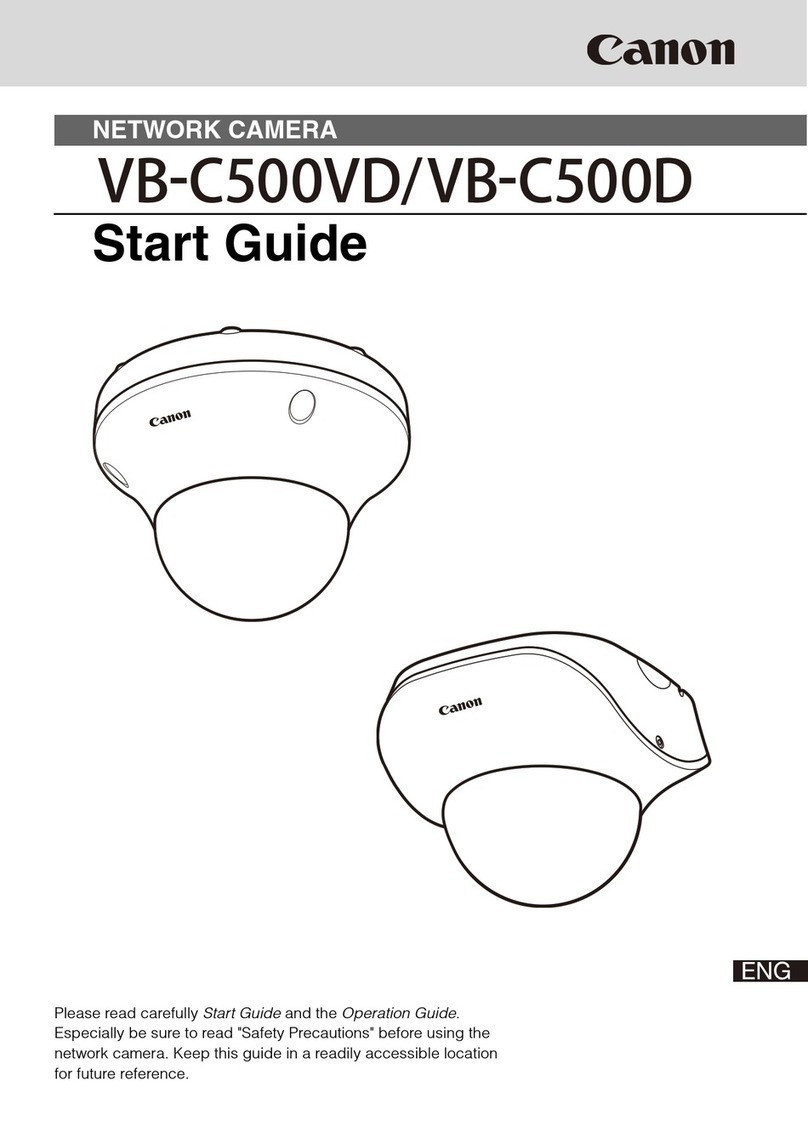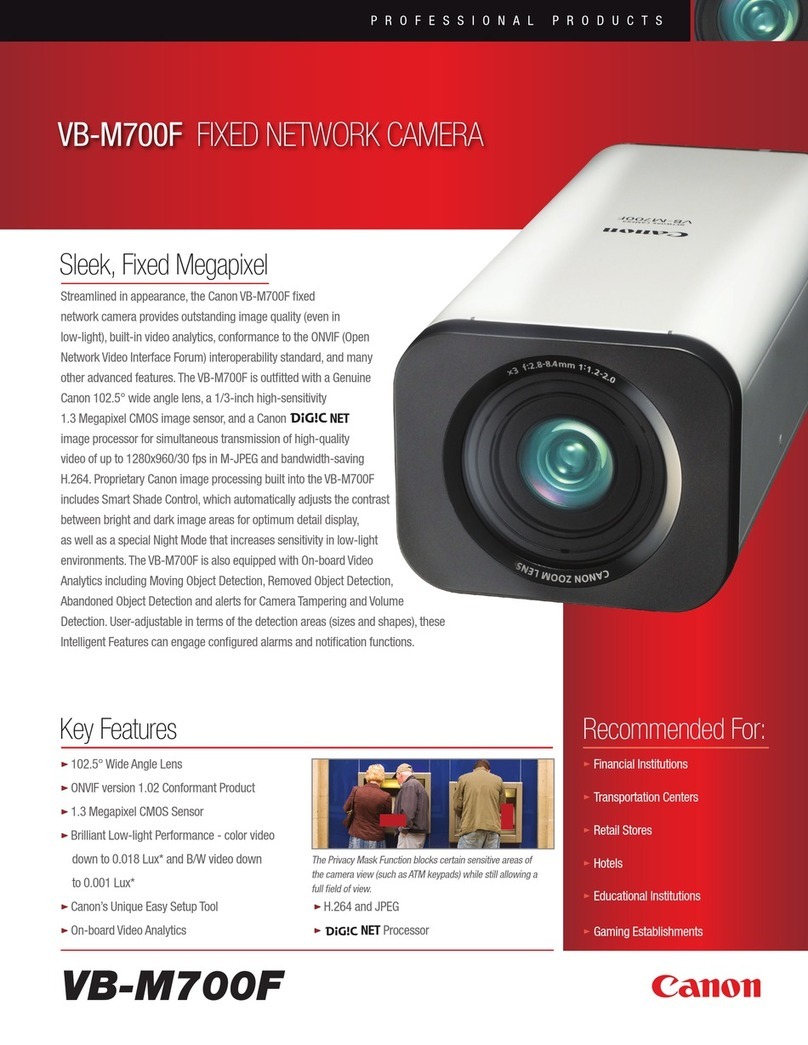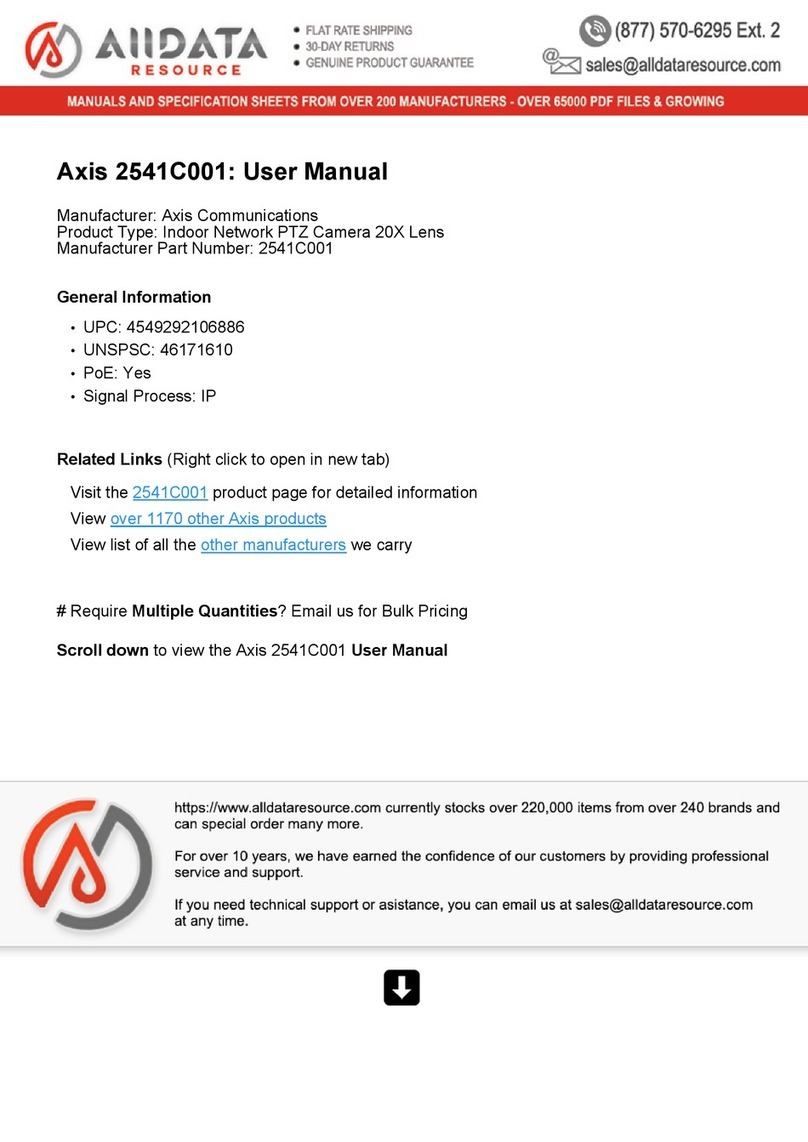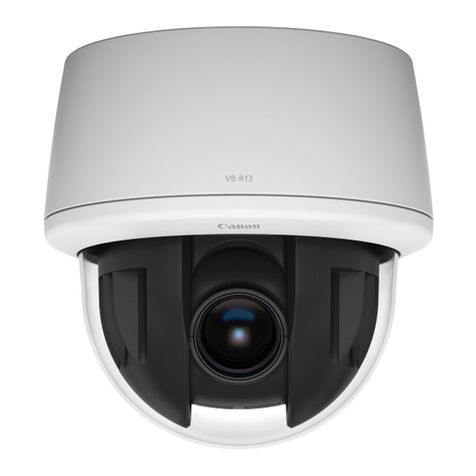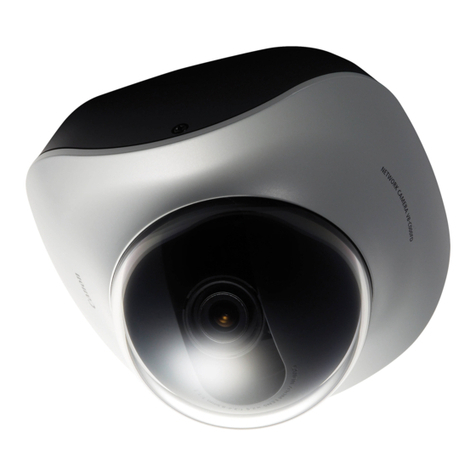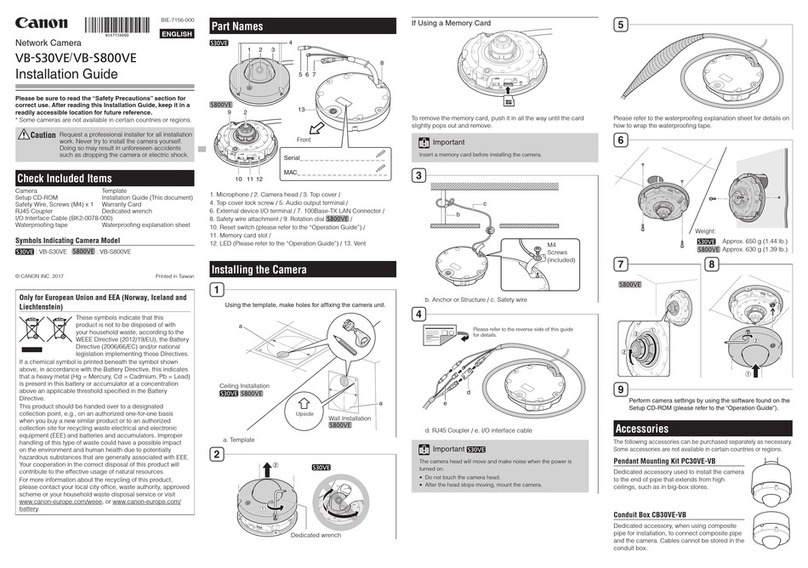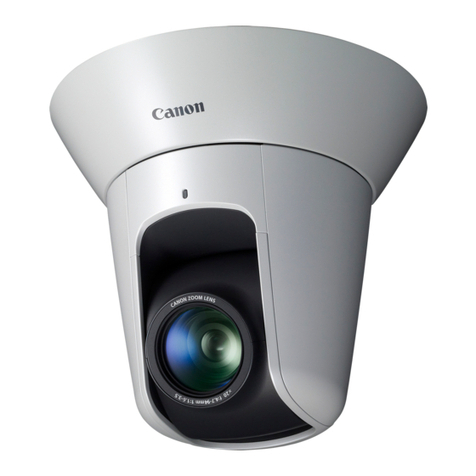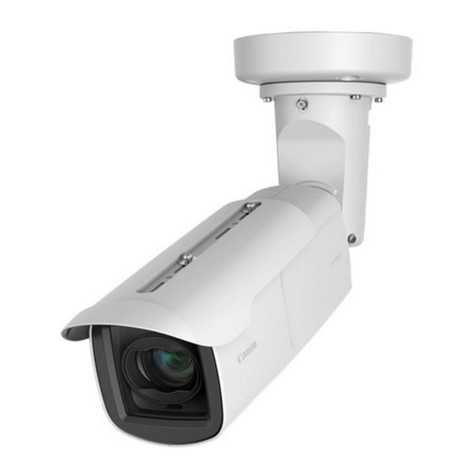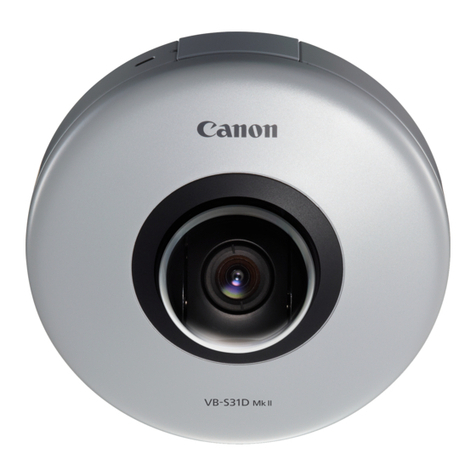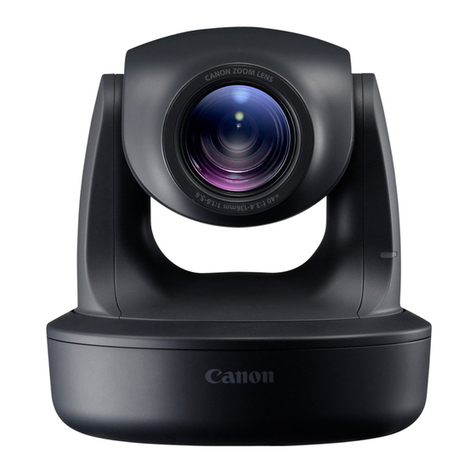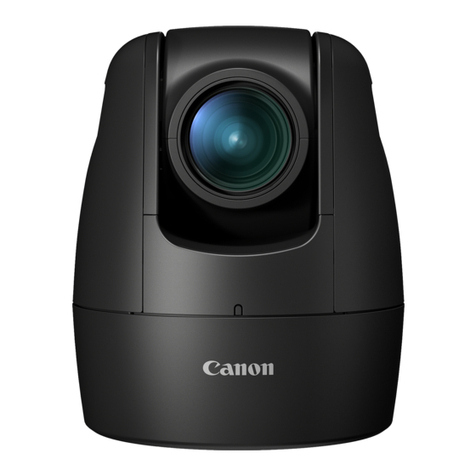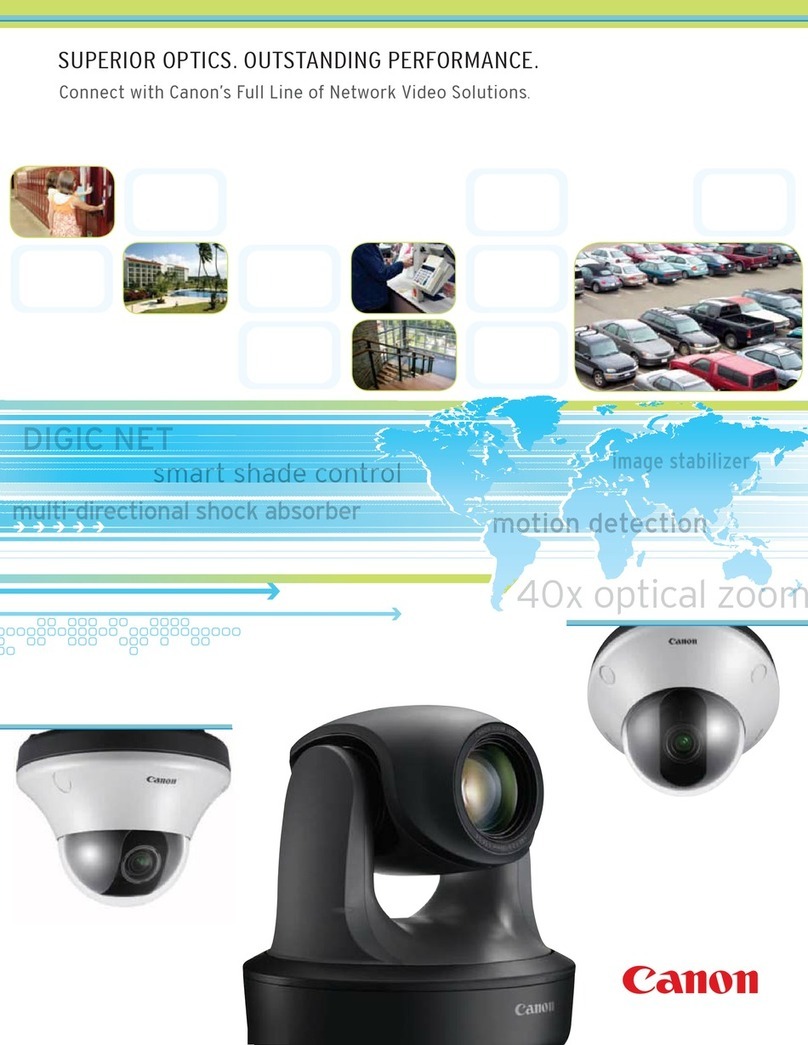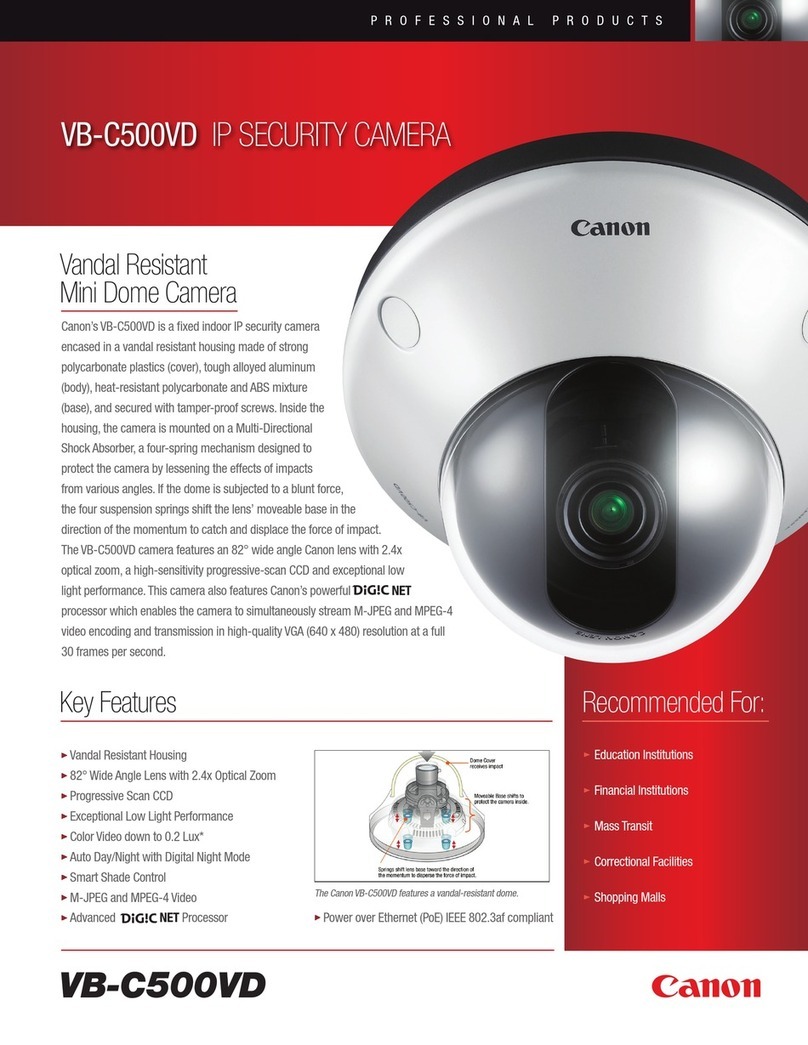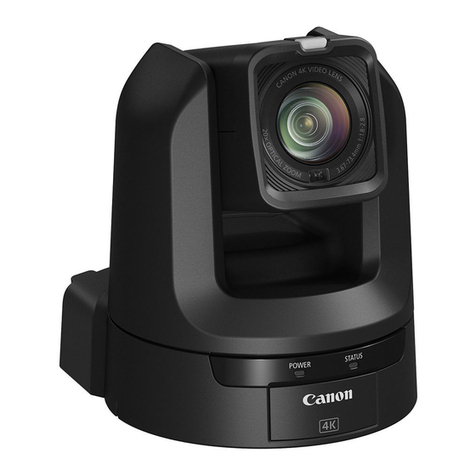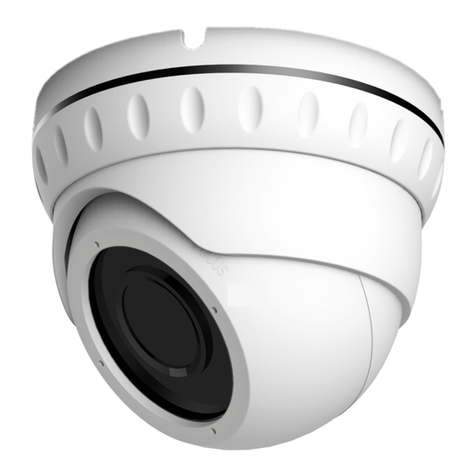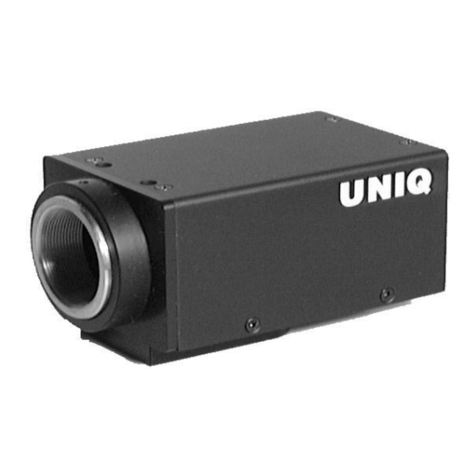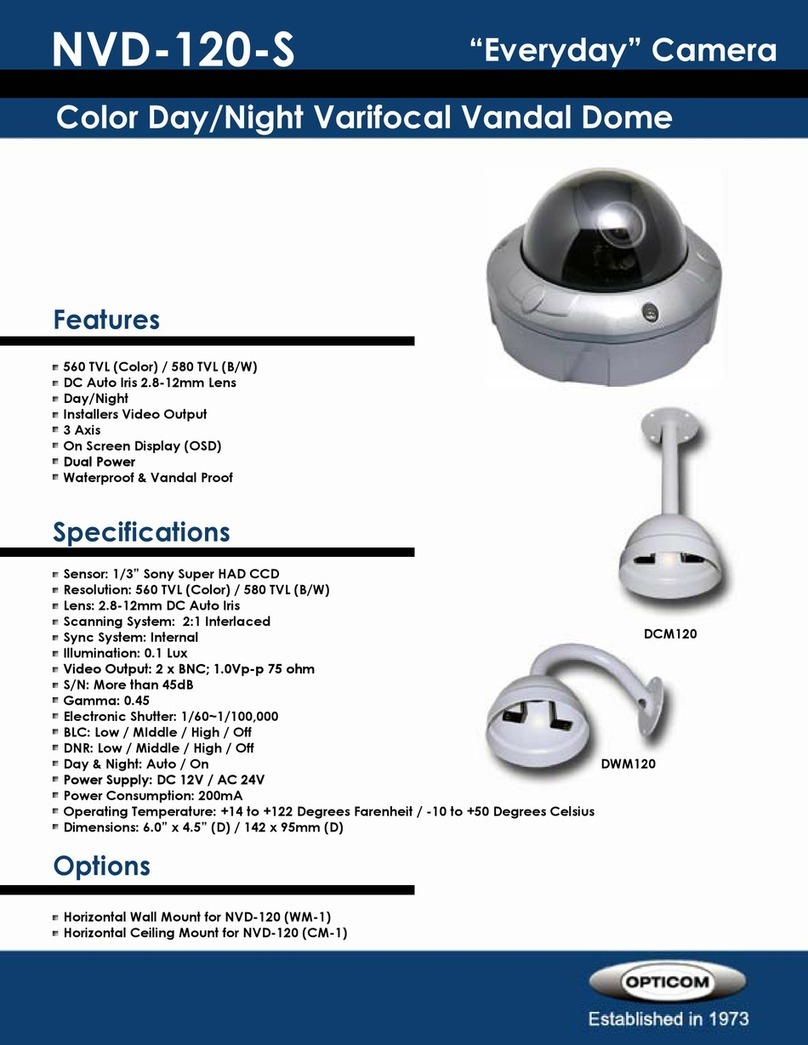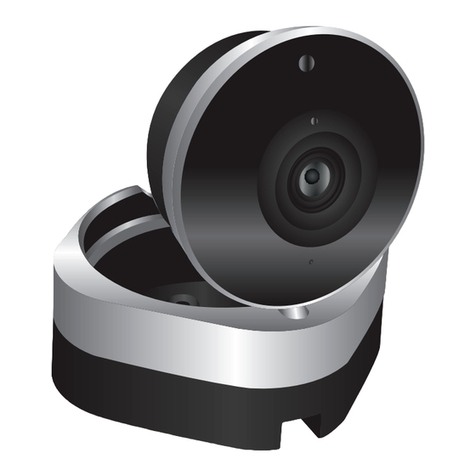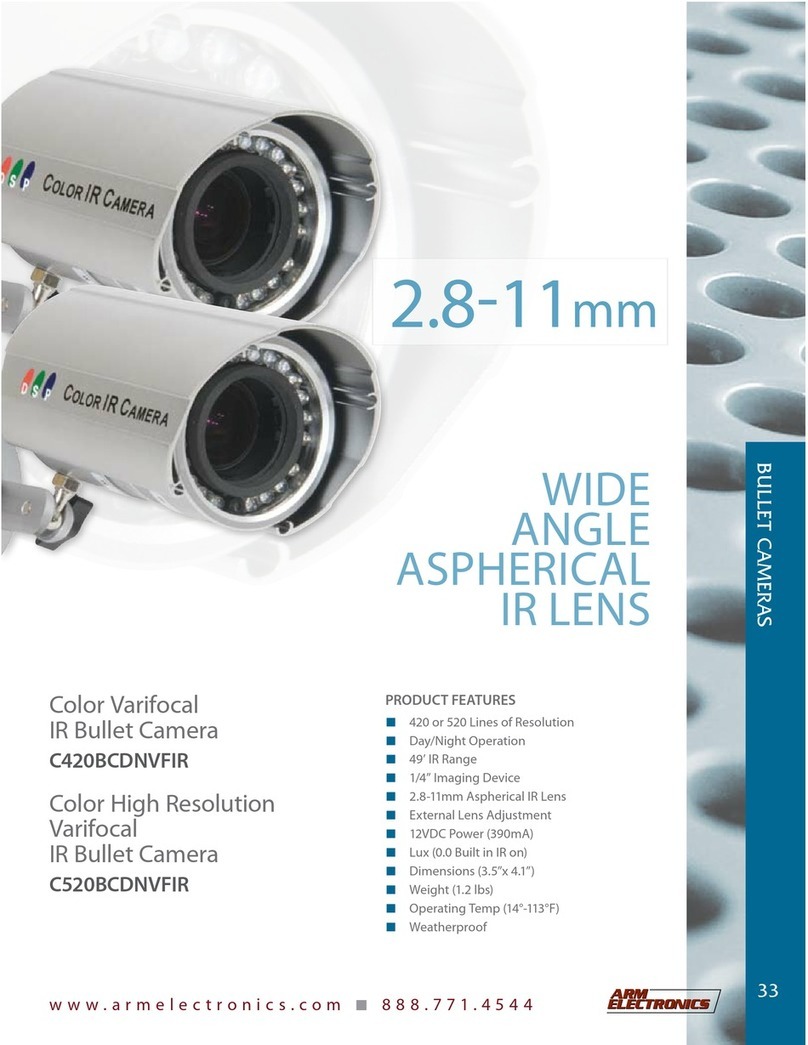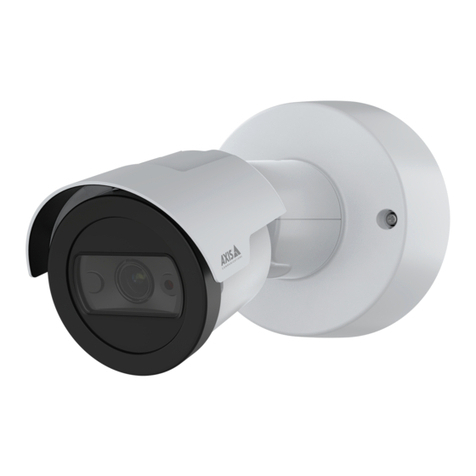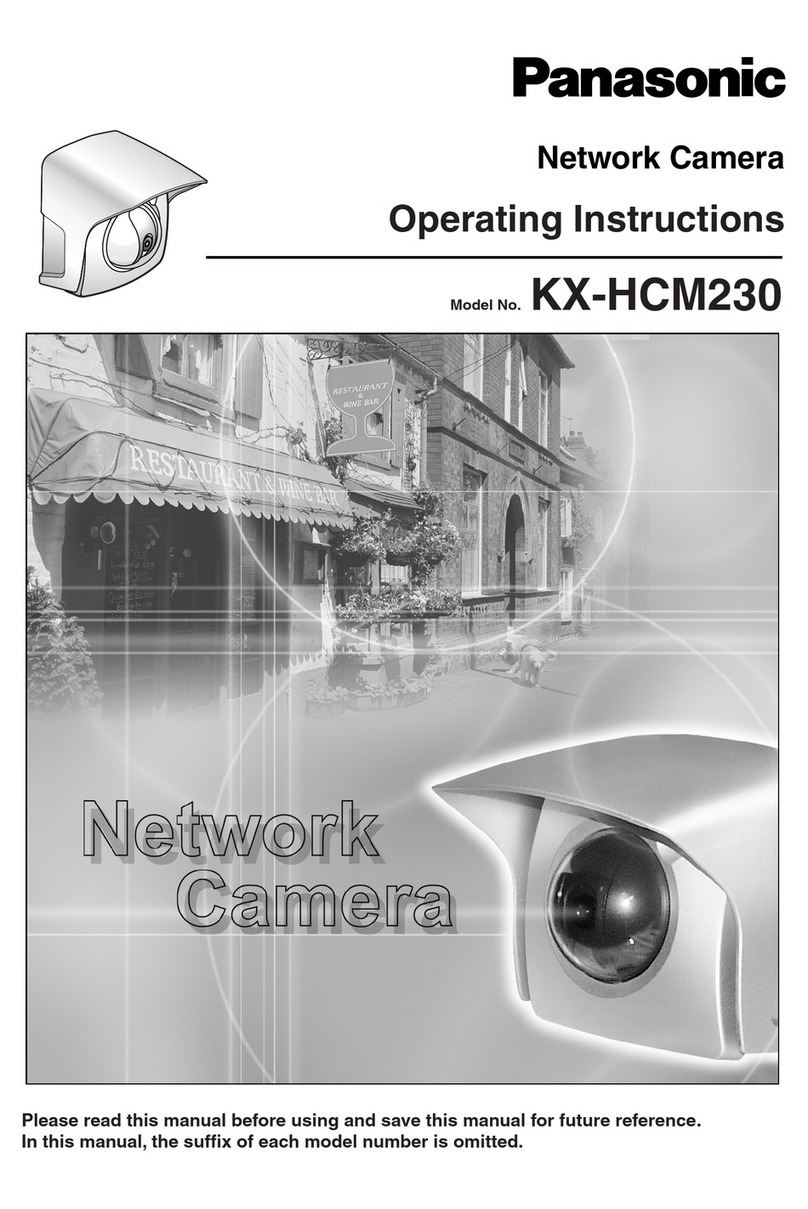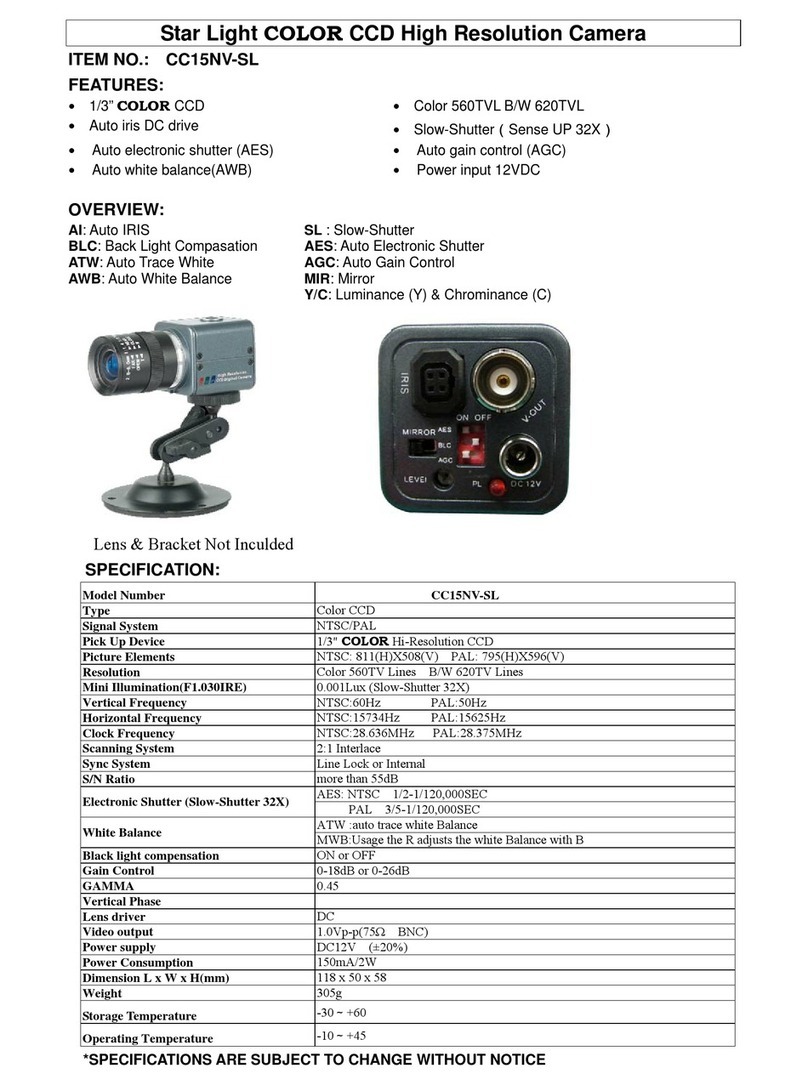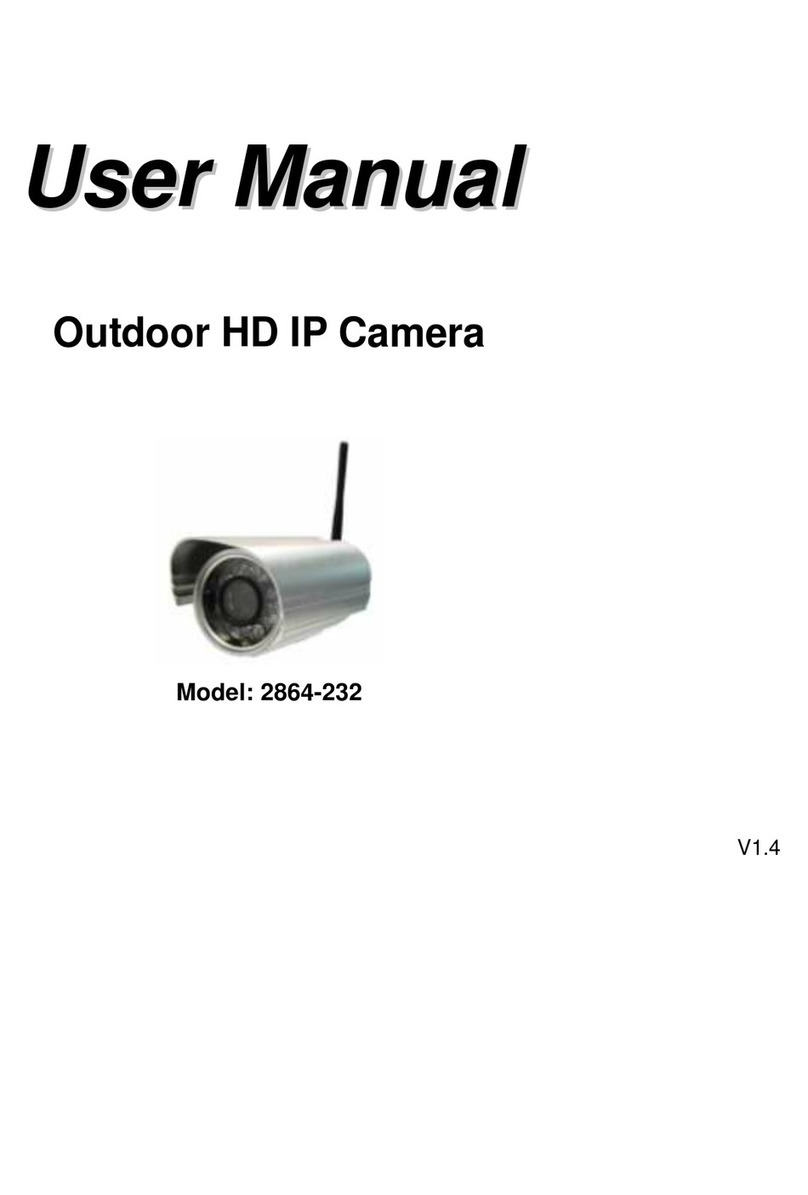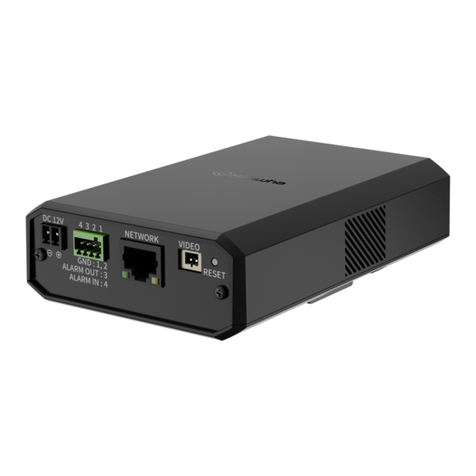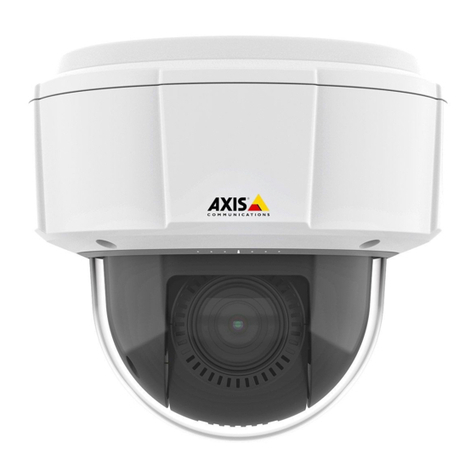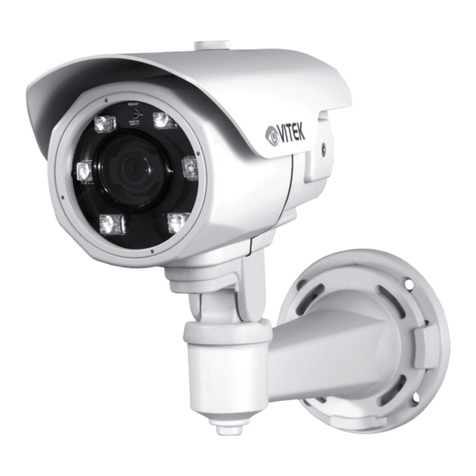7
a
Safe Use of Equipment
ENGLISH
In these safety instructions, the word
“equipment” refers to the Canon
communication camera VC-C50i/VC-C50iR
and all its accessories.
1. Read Instructions - All the safety and
operating instructions should be read
before the equipment is operated.
2. Retain Instructions - The safety and
operating instruction should be retained
for future reference.
3. Heed Warnings - All warnings on the
equipment and in the operating
instructions should be adhered to.
4. Follow Instructions - All operating and
maintenance instructions should be
followed.
5. Cleaning - Unplug this equipment from
the wall outlet before cleaning.
Wipe the equipment with a clean soft
cloth. If necessary, put a cloth in diluted
neutral detergent and wring it well
before wiping the equipment with it.
Finally, clean the equipment with a
clean dry cloth. Do not use benzene,
thinner or other volatile liquids or
pesticides as they may damage the
product’s finish. When using chemically-
treated cleaning cloths, observe those
precautions accordingly.
6. Accessories - Do not use accessories
not recommended in this manual as
they may be hazardous. Always use
specified connection cables. Connect
devices correctly.
7. Water and Moisture - Hazard of electric
shock - Do not use the equipment near
water or in rainy/moist situations. Do
not put a heater near this equipment.
8. Placing or Moving -
Do not place on an
unstable cart, stand,
tripod, bracket or
table. The equipment
may fall, causing
serious injury to a child or adult, and
serious damage to the equipment. An
equipment and cart combination should
be moved with care. Quick stops,
excessive force, and uneven surfaces
may cause the equipment and cart
combination to overturn.
9. Power Sources - The PA-V16 AC
adapter should be operated only from
the type of power source indicated on
the marking label. If you are not sure of
the type of power supply to your home,
consult your equipment dealer or local
power company.
10. Polarization - The PA-V16 AC adapter
is equipped with a polarized 2-prong
plug (a plug having one blade wider
than the other).
The 2-prong polarized plug will fit into
the power outlet only one way. This is a
safety feature. If you are unable to
insert the plug fully into the outlet, try
reversing the plug. If the plug still fails
to fit, contact your electrician to replace
your obsolete outlet. Do not defeat the
safety purpose of the polarized plug.
11. Power Cord Protection - Power cords
should be routed so that they are not
likely to be walked on or pinched by
items placed upon or against them. Pay
particular attention to plugs and the
point from which the cords exit the
equipment.
12. Outdoor Antenna Grounding - If an
outside antenna is connected to the
equipment, be sure the antenna is
grounded so as to provide some
protection against voltage surges and
built-up static charges. Section 810 of
the National Electrical Code, ANSI/
NFPA No.70-1984, provides
information with respect to proper
grounding of the mast and supporting
structure, grounding of the lead-in wire
to an antenna discharge unit, size of
grounding conductors, location of
aIMPORTANT SAFETY INSTRUCTIONS

